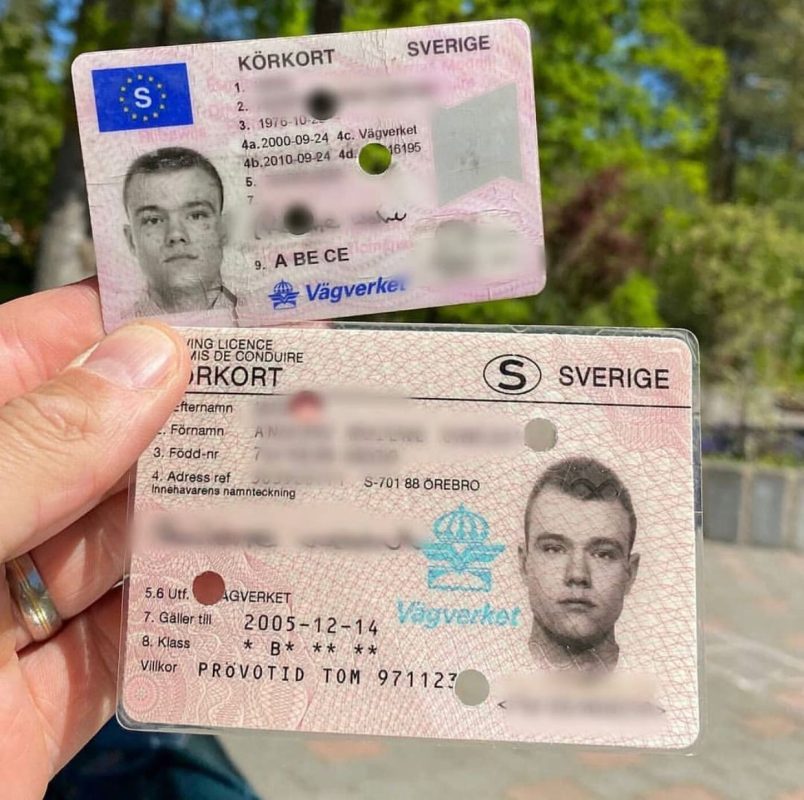11 "Faux Pas" That Are Actually Acceptable To Make With Your Driving License Id-Handling 2025

The Future of Driving Licenses: ID Handling in 2025
As technology continues to develop at an unprecedented rate, numerous sectors are accepting developments to enhance user experience and efficiency. Among the locations experiencing considerable improvement is identity management, particularly concerning driving licenses. With the introduction of digital licenses and advanced identification approaches, the landscape of driving license ID handling is expected to go through considerable modifications by 2025. This short article explores the anticipated developments in driving license ID handling, the implications for users, and responses regularly asked questions about the future of driving licenses.
The Evolution of Driving Licenses
Driving licenses have traditionally acted as a way of recognizing an individual's authority to run a motor vehicle. They also serve multiple secondary functions, consisting of age confirmation and identity verification for banking and travel. Nevertheless, the physical card system has constraints, consisting of threats of counterfeiting, loss, and out-of-date info. As society seriously relies on efficient and safe and secure recognition systems, the shift toward digital licenses is ending up being progressively popular.
Existing Trends in Driving License ID Handling
- Digital Licenses: Many states are piloting digital driving licenses that permit users to save their qualifications on their smartphones. These digital licenses are developed with innovative security functions, including biometric information, and can be scanned or shared firmly.
- Blockchain Technology: Some jurisdictions are exploring blockchain to boost the security and authenticity of driving licenses. This innovation makes sure that details can not be tampered with and that the information is quickly proven.
- Facial Recognition: Increasingly utilized in recognition practices, facial acknowledgment innovation can accelerate the procedure of verifying an individual's identity versus their driving license. This technology likewise helps reduce scams and keep the stability of the licensing systems.
- Multi-Functional Licenses: Future driving licenses may integrate additional features such as health records, travel paperwork, and even payment systems, providing a comprehensive identity option.
The Benefits of Digital Driving Licenses by 2025
The shift toward digital driving licenses presents a number of benefits, including:
- Convenience: Users can access their licenses anytime, which eliminates the need for physical cards. This is especially beneficial when people forget their license, as digital copies can be obtained quickly.
- Security: Advanced security procedures can reduce the danger of identity theft, fraud, and unauthorized duplication. Digital licenses often consist of encryption and biometric confirmation.
- Efficiency: Reduced wait times at federal government offices and throughout traffic stops, as law enforcement can validate digital licenses instantly.
Implications for Users
While the developments in driving license ID dealing with present many advantages, they also include obstacles. Users require to adjust to brand-new innovation and ensure they comprehend the changes and their ramifications. Here are some factors to consider:
- Privacy Concerns: With increased digital footprints, there will be increased issues over data privacy and how biometric data is saved and used.
- Availability Issues: Individuals without access to smart devices or digital technologies may deal with barriers to getting and utilizing digital licenses.
- Regulatory Compliance: With different jurisdictions embracing different systems and processes, users need to understand their regional laws regarding digital licenses and recognition.
Prepared For Changes in Driving License ID Handling by 2025
| Element | Present Status | Anticipated Change by 2025 |
|---|---|---|
| License Format | Physical cards | Predominantly digital licenses |
| Confirmation Process | Manual checks | Automated biometric confirmation |
| Security Measures | Standard holograms and functions | Advanced encryption and blockchain |
| Jurisdictional Differences | Fragmented procedures across states | More standardized nationwide systems |
| User Interaction | In-person renewals and checks | Mobile applications for management |
FAQs
1. What is a digital driving license?A digital driving license is an electronic variation of a conventional driving license that is saved on a mobile phone. It can be used for recognition and confirmation in numerous circumstances, with enhanced security functions to prevent scams.
2. How will digital licenses enhance security?Digital licenses use encryption and biometric data, making them more difficult to forge or misuse compared to standard cards. Additionally, blockchain innovation can guarantee data authenticity and stability.
3. Will everybody be required to change to a digital license?While numerous jurisdictions are approaching digital licenses, regulations may vary. Users are encouraged to consult their regional licensing authorities for particular standards.
4. What are Körkortonline of digital licenses?Some prospective drawbacks consist of privacy concerns concerning data storage, ease of access concerns for individuals without smart devices or digital literacy, and the requirement for a robust regulative framework to manage security and user rights.
5. How can I prepare for the shift to digital licenses?Stay informed about local initiatives concerning digital licenses, explore readily available mobile applications for handling recognition, and cultivate digital literacy to browse brand-new technologies confidently.
The future of driving licenses and ID handling is poised for substantial advancement by 2025. As digital licenses end up being more prevalent, users will experience boosted security, convenience, and performance. However, along with the benefits come obstacles that will need public awareness and adjustment. Stakeholders should focus on education, policy, and accessibility to ensure a smooth transition that empowers individuals with the recognition tools of the future. As technology advances, so too will the techniques through which society handles identity, particularly crucial in processes as basic as running an automobile.

